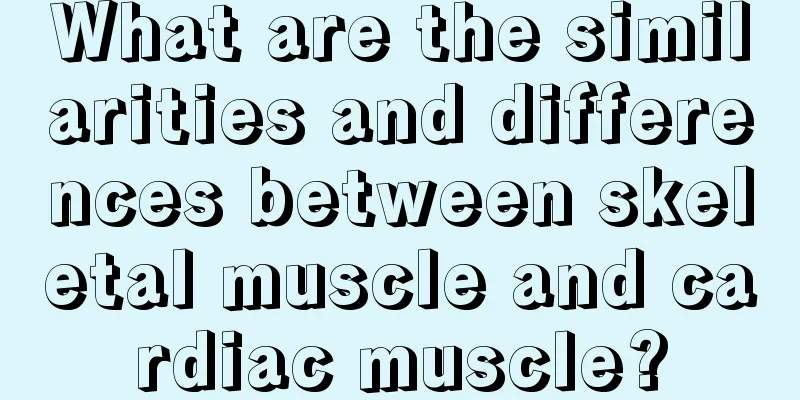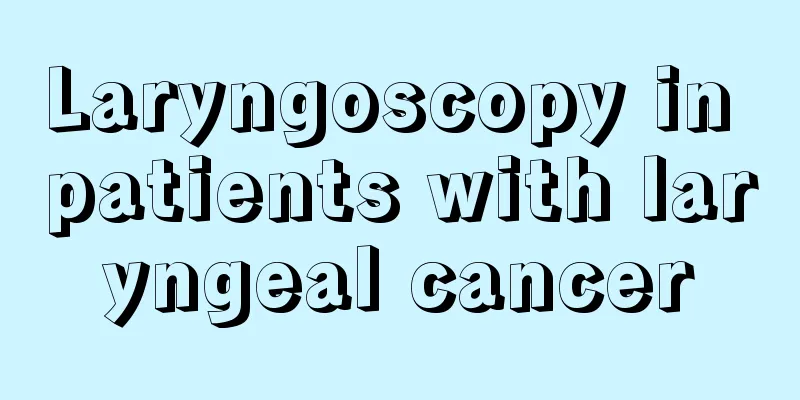What are the similarities and differences between skeletal muscle and cardiac muscle?

|
Skeletal muscle and cardiac muscle are two different muscle tissues. Skeletal muscle cells are relatively long, have fewer branching cardiac muscle cells, and do not rely on extracellular calcium ions for influx. Cardiac muscle cells have certain intercalated discs, through which they synchronize their potentials, and also rely on extracellular calcium ions for influx. It can be seen that there are many similarities and differences between the two. 1. Similarities and differences between skeletal muscle and cardiac muscle Skeletal muscle cells are relatively long and have fewer branches than cardiac muscle cells. Cardiac muscle cells have intercalated discs, which synchronize action potentials. The contraction of cardiac muscle cells depends on the influx of extracellular calcium ions, while skeletal muscle does not. 2. What is skeletal muscle? Skeletal muscle, also known as striated muscle, is a type of muscle. Skeletal muscle is composed of thousands of contractile muscle cells (also called muscle fibers because of their long, thin fiber-like shape) and is covered and connected together by connective tissue. Any physical activity is the result of skeletal muscle contraction. The human body has more than 600 skeletal muscles, accounting for about 40% of the body weight. Muscle strength and endurance directly affect exercise performance. 1. What is myocardium? Myocardium is a type of muscle tissue composed of myocardial cells. The structure of cardiac muscle cells is basically similar to that of skeletal muscle and also has striations. In a broad sense, myocardial cells include specially differentiated myocardial cells that make up the sinoatrial node, intraatrial bundle, atrioventricular junction, atrioventricular bundle (i.e., His bundle) and Purkinje fibers, as well as general working cells of the atrial and ventricular muscles. The first five types constitute the cardiac pacemaker conduction system. They contain very few or no myofibrils and therefore have no contractile function. However, they have autonomy and conductivity, and are the functional basis of the heart's autonomic activity; the latter two have contractility, and are the functional basis of the heart's systolic and diastolic activity. Clinical manifestations of cardiomyopathy 1. Dilated cardiomyopathy Dilated cardiomyopathy, also known as congestive cardiomyopathy, is pathologically characterized by myocardial degeneration, fibrosis, and cardiac chamber dilatation. Its main feature is myocardial contractile dysfunction, which leads to heart failure. Patients are prone to various arrhythmias and embolism, or even sudden death. Most patients have symptoms such as palpitations, shortness of breath, chest tightness, and pain and discomfort in the precordial area. In severe cases, symptoms of congestive heart failure such as edema, orthopnea, and liver enlargement with tenderness may occur. 2. Hypertrophic cardiomyopathy Hypertrophic cardiomyopathy is characterized by asymmetric myocardial hypertrophy and reduced ventricular cavity size. Patients may have symptoms such as palpitations, shortness of breath, chest tightness and pain, and exertional dyspnea. In severe cases, dizziness and syncope may occur. When accompanied by outflow tract obstruction, dizziness or even loss of consciousness is often induced when standing up or exercising. 3. Restrictive cardiomyopathy Restrictive cardiomyopathy is characterized by endocardial fibrosis, which affects both the contraction and relaxation functions of the heart. The patient has right heart regurgitation disorder and significant right heart failure, and may experience symptoms such as palpitations, dyspnea, edema, distended jugular veins, enlarged liver and ascites. |
<<: How to exercise the cervical spine and shoulders
>>: How to store sparkling wine
Recommend
How to treat moderate periodontitis?
Periodontitis is a chronic disease that affects p...
How to grow body hair quickly
The hair that grows on the body is generally call...
Can esophageal cancer be prevented?
Esophageal cancer places an economic burden on ma...
Can I wash my face the next day after applying the acne patch?
Some people have a lot of pimples on their faces....
What auxiliary examinations are needed for lung cancer diagnosis? These four examinations are necessary for lung cancer diagnosis
Although people's living conditions are getti...
Can mulberry leaves be put in the refrigerator?
I believe that many people are familiar with the ...
There is a hard lump on the child's ear. What's wrong? It doesn't hurt or itch.
If a child has a hard bump on their ear that does...
The difference between leek and chives
Chives and leeks are both vegetables we often eat...
Is colon cancer metastasis to liver cancer contagious?
The fear of cancer often leads to some abnormal p...
Dietary adjustment after minimally invasive surgery for kidney stones
Minimally invasive surgery for kidney stones is n...
Specific schedule for baby vaccinations
As parents, we need to know the time for babies t...
What is the necessity of group ac meningococcal vaccine
Group AC meningococcal vaccine is an essential va...
What are the rehabilitation exercises for pancreatic cancer
Can I exercise in the late stage of pancreatic ca...
Is acupuncture effective for rhinitis? What are the symptoms of rhinitis?
There are many acupuncture points on the human bo...
The difference between round face and square face
We all know that there are many kinds of face sha...









